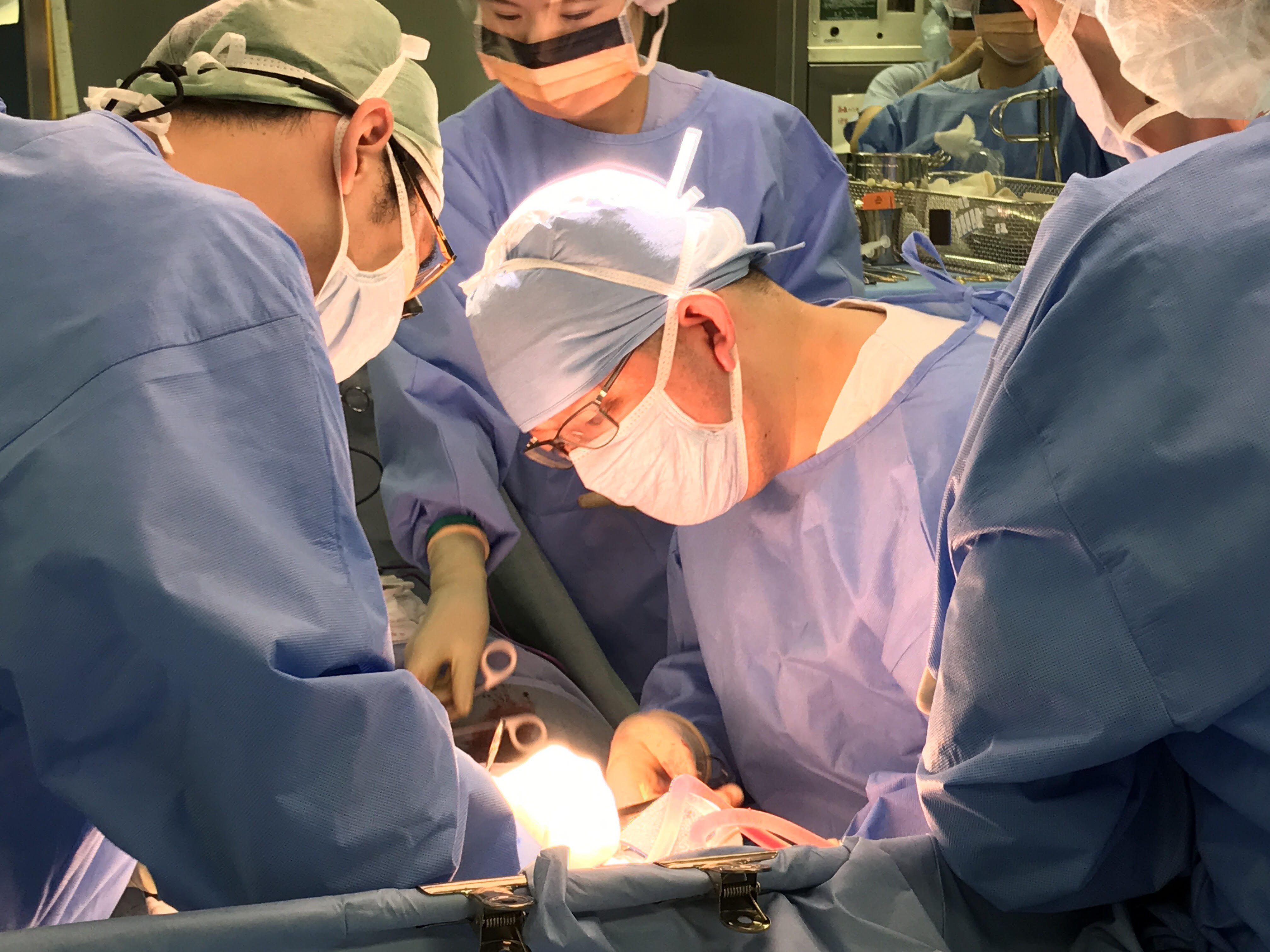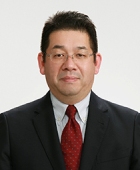Centers & Services
Top > Centers & Services > Clinical Services > Artificial Organ and Transplantation Surgery
Artificial Organ and Transplantation Surgery

The Department of Artificial Organs and Transplantation Surgery specializes in living and cadaveric donor liver transplantation for patients with end-stage liver disease, for which careful management and a team approach involving various clinical departments are required.
Medical services
A team of specialists in liver transplantation provide medical services both in the outpatient clinic and inpatient wards. There are also coordinators from the Organ Transplantation Center to support donors in dealing with their problems and address other issues specific to organ transplant. The physician attending the patient during hospitalization will generally be responsible for postoperative outpatient treatment.
Diagnosis and treatment policy
Our motto is “to perform highly advanced, safe, and successful liver transplants.” With this motto, the department staff carefully discusses and reviews each case daily to achieve good outcomes.
Specialties
Living donor partial liver transplant
The Transplantation Surgery Department of the University of Tokyo Hospital performed the first living donor liver transplant in Japan on January 31, 1996. As of December 2022, the number of patients undergoing living donor liver transplant at this hospital reached 798, including 714 adults and 78 children. This is the third largest number of liver transplants in Japan. The survival rate for liver transplant at this hospital is higher than the national average by about 10%. The 1-, 3-, and 5-year posttransplant survival rates are 93%, 89% and 85%, respectively (as of December 2022).
Brain-dead donor liver transplantation
There have been 738 cases of liver transplants from brain-dead donors in Japan. Our Hospital, designated as a hospital for liver transplants from braindead donors, has successfully performed 59 liver transplants from braindead donors.
Indications for liver transplantation
Biliary atresia, metabolic liver disease, Wilson’s disease, citrullinemia, familial amyloid neuropathy, fulminant hepatitis, viral (type B and C) decompensated cirrhosis, primary biliary cholangitis, primary sclerosing cholangitis, alcoholic and non-alcoholic steatohepatitis, chronic cholestasis, primary hepatocellular carcinoma (insurance coverage is within the Milan criteria or 5-5-500 criteria, less than 5cm in diameter and less than 5 in number is our indication for living donor liver transplantation (Tokyo criteria)), etc.
Advanced treatments/ Specialized treatments
- Designated institution for liver transplants from brain-dead donors and living donors
- Surgical treatment using cryopreserved vein grafts
- Navigation system for hepatectomy using 3-dimensional images
Frequently performed tests
Outpatients
- Autologous blood storage (donor)
- CT
- Abdominal ultrasound examination
- Upper gastrointestinal endoscopy (including ligation of esophageal varices)
- ICG test
- HLA, lymphocyte Cross-match test
Inpatients
- Liver biopsy
- ERCP
- Abdominal ultrasound examination
- Angiography
- CT
Kiyoshi Hasegawa
Departments/Divisions
Hepato-Biliary-Pancreatic Surgery Division, Artificial Organ and Transplantation Division
Titles
M.D. , Ph.D.
Expertise/Specialties
Liver transplantation, Hepato-Biliary-Pancreatic Surgery, Hepatocellular carcinoma, Metastatic liver tumor
Research Interests
Surgical treatments for advanced liver malignant tumors, Fluorescence Guided Surgery, Artificial blood vessel
Languages
Japanese / English
Numbers of major operations and treatments performed
| Name of operation/treatment | Number |
|---|
| 1 | Adult-to-adult living donor partial liver transplantation | 15 |
| 2 | Brain-dead donor liver transplantation | 1 |
(2015)
Areas of expertise, treatment and examination methods
Diseases
- Biliary atresia
- Metabolic liver diseases
- Viral cirrhosis B and C
- Primary biliary cirrhosis
- Primary sclerosing cholangitis
- Primary hepatocellular cancer
- Fulminant hepatitis
- Alcoholic cirrhosis, and others
Treatment methods
- Adult-to-adult living donor partial liver transplantation (including auxiliary partial orthotopic liver transplantation)
- Brain-dead donor liver transplantation
Numbers of major and specialized examinations conducted in this department
| Name of examination | Number |
|---|
| 1 | Color Doppler abdominal ultrasound | 478 |
| 2 | Abdominal CT and 3-D image analysis (image-based navigation for hepatectomy) | 41 |
| 3 | Donor preoperative liver biopsy | 6 |
(2015)

